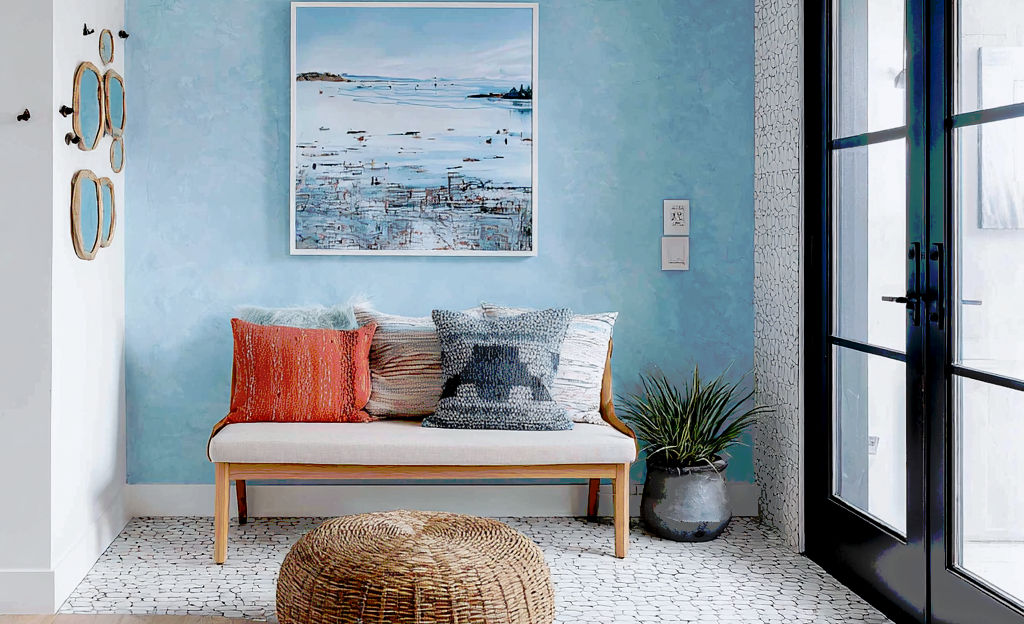
If your apartment feels more like a shoebox than a home, you’re not alone. Between rent prices skyrocketing and open-space layouts shrinking, most of us are living smaller than we’d like. But that doesn’t mean your place has to feel small. With the right choices, even a studio can look pulled together, airy, and way more spacious than it actually is. It’s not about knocking down walls, it’s about learning how to cheat the eye and make the most of what you’ve got.
Whether you’re moving into your first apartment or just trying to stop tripping over your Poliform coffee table, small-space design is a mix of psychology, smart furniture, and knowing when to stop adding stuff. Think wall-mounted units that seem to float, wardrobes that melt into the background, and modular sofas that fit just right instead of eating up your floor plan.
Look Up, Not Out
When you can’t expand outward, go up. Tall shelves, floor-to-ceiling curtains, and vertical lighting draw the eye upward and instantly make your space feel taller. Even hanging art higher than usual can trick your brain into thinking the ceilings are higher. A common mistake is letting everything in the room sit at the same height: the result is a flat, boxy feeling. Stack your storage, layer your lighting, and use mirrors to bounce light around like an optical illusion.
If you can, ditch chunky bookcases for open shelving. You’ll get storage without the visual heaviness. And please, don’t stop your curtains at the window frame. Mount them near the ceiling, let them fall all the way to the floor, and watch the room transform in seconds.
Keep It Light (Literally and Figuratively)
Natural light is free square footage. Heavy drapes, dark paint, and oversized furniture can crush a small room faster than you think. Use soft, light tones for walls and fabrics, not necessarily white, but warm neutrals that reflect light instead of swallowing it. Mix in glass or acrylic pieces that seem to disappear into the space, like a clear coffee table or floating desk.
And lighting isn’t just overhead. In fact, one big ceiling lamp often makes a small room feel even smaller. Scatter a few smaller lamps around to create a cozy, layered glow. A Foscarini floor lamp next to your Frau sofa, a sconce above your bed, a hidden LED strip under your kitchen shelves: these small details make a massive difference.
Multipurpose Furniture Is Your New Best Friend
When every square foot counts, furniture has to multitask. Think ottomans with hidden storage, extendable dining tables, or a Campeggi sofa that turns into a guest bed. A fold-down desk mounted on the wall can give you a workspace during the day and vanish at night. The goal is to design around your lifestyle, not the other way around.
Modular pieces are especially smart for tiny spaces. A sectional with movable elements, like B&B Italia’s designs, lets you shift the layout when you have guests or need more room to stretch. Bonus: the cleaner the lines, the larger the space feels. Avoid overly ornate furniture; the visual clutter is a space killer.
How to Fake Square Footage with a Mirror
If there’s one designer trick that never fails, it’s mirrors. They reflect light, open up sightlines, and double what the eye perceives as space. A large Kristalia mirror opposite a window can turn one light source into two. But it’s easy to go overboard; you don’t want to live in a funhouse. Pick one or two statement mirrors with thin frames and let them do the heavy lifting.
Even reflective finishes on furniture, like lacquered surfaces or metallic lamps, can bounce light around and give the illusion of depth. The point isn’t to make your apartment sparkle, but to make it breathe.
Edit, Don’t Fill
Small-space living is 30% about what you buy and 70% about what you don’t. Every piece you bring in should earn its spot. Clutter is the ultimate enemy of space: it shrinks rooms faster than low ceilings or dark walls ever could. That means organizing cables, saying goodbye to that random Emu chair you never use, and hiding your laundry basket where no one can see it.
Storage doesn’t have to be boring, though. Closed cabinets keep things tidy, but open shelving with a few curated objects (a stack of books, a ceramic vase, one or two plants) can make a small space feel personal instead of chaotic. The trick is to display less, but better.
Texture and Contrast: The Secret Sauce
Flat, one-note interiors can feel sterile, no matter the size. Add texture through materials like linen, wool, and natural wood. These details create warmth without crowding the space. Try mixing matte and glossy finishes for visual balance. Think a rough wool rug against a sleek side table, or a leather armchair next to a soft cotton sofa.
If your room is small but bright, don’t be afraid to play with contrast. A dark accent wall can actually make lighter furniture pop and add dimension. Just balance it with plenty of light and reflective surfaces.
The Visual Tricks Designers Swear By
Design is basically stagecraft; you’re directing how the eye moves through a space. Keep sightlines open. Avoid blocking the view from one side of the room to the other. Use rugs to define areas instead of walls or partitions. Floating furniture, like wall-mounted consoles or nightstands, gives the impression of space underneath: another small but powerful visual trick.
And don’t forget: scale matters. That oversized couch might look amazing in a showroom, but it’ll swallow your apartment whole. Always measure your space before buying, and leave a little breathing room between pieces. Negative space is your best ally.
Why Small Homes Deserve Big Ideas
Here’s the truth: living in a small home isn’t a design tragedy, it’s a creative challenge. The smaller the space, the more every decision counts. Invest in quality furniture that adapts and lasts, rather than filling your place with random fast-decor buys that wear out in a year.
If you want your home to feel bigger, make it feel smarter. That might mean a mirror in the hallway, a foldable table, or a Poliform modular system that adjusts as your life does. Most of all, it means letting your personality take the lead, because a well-thought-out space, no matter how small, always feels larger than life.




















